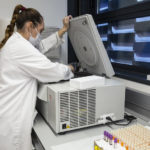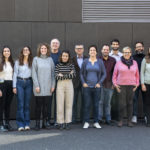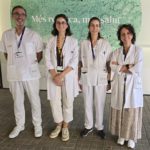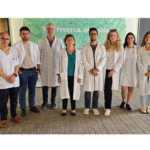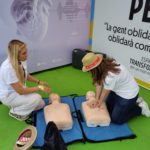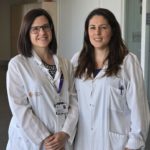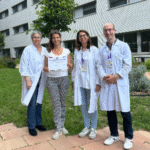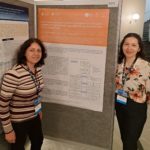
Cancer continues to be one of the leading causes of death worldwide and in Spain. According to the report Cancer Figures in Spain 2025 by the Spanish Society of Medical Oncology (SEOM), nearly 300,000 new cases of cancer will be diagnosed in Spain this year, with colorectal, breast, lung, prostate, bladder, lymphoma, and myeloma being the most common. In 2023, tumors accounted for more than a quarter of all deaths in Spain (26.5%), with 115,889 deaths, placing them practically at the same level as cardiovascular diseases as the leading cause of mortality.
Despite these figures, research has enabled survival to improve significantly. Five-year net survival now reaches 55.3% in men and 61.7% in women, nearly double the rate of four decades ago. These advances are due both to earlier diagnosis—which allows treatment of the disease in its initial stages—and to the development of increasingly effective and personalized therapies.
Immunotherapy and CAR-T Therapies: A New Horizon
Among the most innovative treatments that have transformed cancer care is immunotherapy, which harnesses the patient’s immune system to recognize and destroy tumor cells. One of the most promising modalities is CAR-T therapy, which genetically modifies the patient’s T lymphocytes to specifically and more effectively target and eliminate tumor cells.
The Sant Pau Research Institute (IR Sant Pau) is one of the few centers in Europe to develop, academically and independently—without pharmaceutical industry support—two CAR-T therapies:
- HSP-CAR19M, directed at B-cell lymphomas via the CD19 antigen, including diffuse large B-cell lymphoma, follicular lymphoma, and mantle cell lymphoma. It is enriched with memory T cells to ensure durability and is being developed within the TERAV network of the Instituto de Salud Carlos III.
- HSP-CAR30, targeting the CD30 antigen, focused on classical Hodgkin lymphoma and other CD30⁺ tumors. It is the first academic European CAR-T therapy against this target, also designed with memory T cells to reinforce efficacy and persistence.
The most recent major achievement in this line of research has been the highly positive results in patients with refractory Hodgkin lymphoma treated with HSP-CAR30. These patients had already undergone multiple lines of unsuccessful treatment, placing them in a very difficult clinical situation with few therapeutic alternatives. In this context, the new academic HSP-CAR30 therapy developed at IR Sant Pau has achieved high rates of long-lasting responses, with patients remaining disease-free for more than three years. This confirms the potential of second-generation CAR-T therapies designed at the same center.
In the Phase I clinical trial, all patients treated responded to therapy. Moreover, half achieved complete remission, meaning the disease completely disappeared in imaging studies and follow-up clinical analyses. Another relevant finding is that these responses have been sustained over time in a large proportion of cases, demonstrating that the therapy is not only effective in the short term but also capable of inducing long-term disease control. Phase II of the trial, the only one of its kind in Europe, will conclude this October, marking a milestone in the history of CAR-T therapy.
Dr. Javier Briones, head of the Cellular Immunotherapy and Gene Therapy Group at IR Sant Pau and the Hematology Service at Sant Pau Hospital, who is responsible for developing these therapies, emphasized, “The high overall response rate is very uncommon in patients who have undergone multiple lines of treatment. Moreover, 50% achieved complete remission, with the disease disappearing in imaging studies and clinical analyses. This is crucial because it demonstrates that the persistence of CAR-T cells has a real and sustained effect on the disease, which is precisely what we seek.”
The CXCR4 Receptor: A Key Target Against Metastasis
Cancer research at IR Sant Pau is not limited to CAR-T therapies. Another major strategic focus of the institute is the study of the CXCR4 receptor, a protein that plays a fundamental role in tumor progression. Numerous studies have shown that its overexpression is associated with a greater ability of malignant cells to invade and spread, making it a true “Achilles’ heel” in multiple types of cancer.
The Oncogenesis and Antitumor Drugs Group, led by Dr. Ramon Mangues, has been researching CXCR4 for more than fifteen years. It has developed a unique nanomedicine platform capable of selectively directing therapeutic agents against tumor cells that express high levels of this receptor. These protein–drug nanoconjugates release their cytotoxic payload only in such cells, reducing adverse effects on healthy tissues.
In preclinical models, these nanoconjugates have shown high efficacy in both solid and hematologic tumors. In particular, a CXCR4-targeted nanotoxin was able to slow colorectal cancer growth and activate the patient’s immune response, opening possibilities for combinations with immunotherapy. In addition, the group has contributed to an international review on innovative therapies targeting CXCR4, positioning Sant Pau as an emerging reference in anti-metastatic treatments.
The strength of this research line has allowed the technology developed at Sant Pau to be transferred to the business sector through Nanoligent, a joint spin-off of the UAB and IR Sant Pau itself. The company, co-founded by Dr. Mangues, is currently focusing its efforts on the clinical development of CXCR4-targeted nanoconjugates, with the goal of making them available to patients in the coming years. This step reflects the institute’s commitment to translational innovation and collaboration with the biotechnology sector to accelerate the arrival of new treatments to the healthcare system.
Dr. Ramon Mangues stressed, “Metastasis remains the leading cause of cancer-related death, and CXCR4 is key in this process. Targeting it precisely allows us to selectively destroy the most aggressive cells while reducing toxicity. Our experience places us in a unique position to move forward toward anti-metastatic therapies with clinical potential in the coming years.”
Cancer Research Expands at Sant Pau
IR Sant Pau’s commitment to cancer research is also reflected in the creation of new specialized groups. One of them is the TRAIL Group (Thoracic Surgery Research and Innovation in Lung Cancer), led by Dr. Juan Carlos Trujillo-Reyes, which focuses its work on lung cancer, the leading cause of cancer death worldwide. Its research lines range from early diagnosis through screening programs to improving surgical techniques, with a special emphasis on robotic surgery, as well as integrating molecular and clinical biomarkers into clinical practice.
Another newly created group is the Gynecological and Breast Pathologies Group, coordinated by Dr. Silvia Cabrera Daz. This group focuses its research on gynecological neoplasms—endometrium, ovary, uterus, vulva, vagina, and breast—as well as benign pathologies with major impact on women’s quality of life, such as endometriosis, fibroids, and chronic pelvic pain. With a multidisciplinary approach, the group combines clinical care, teaching, and research, with the goal of generating cutting-edge knowledge and improving women’s healthcare in a highly complex hospital setting.




